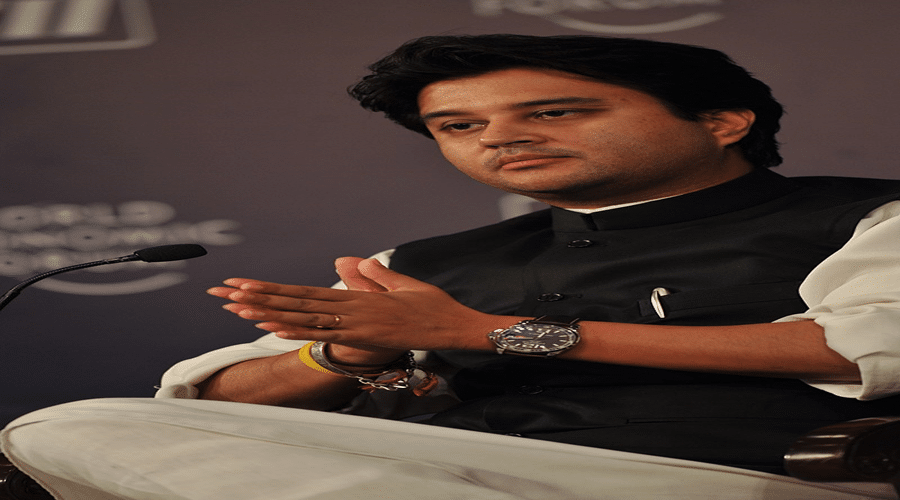Govt support India’s Telecom Future

Telecom Minister Jyotiraditya Scindia recently emphasized the Indian government’s commitment to supporting the mobile industry. He stated that the aim is to maintain at least four to five key players in the sector to ensure a robust digital infrastructure. As the country navigates the evolving landscape of telecommunications, including the rise of satellite communications and new entrants like Elon Musk’s Starlink, Scindia believes that these advancements will play a crucial role in achieving comprehensive mobile coverage across India.
Government Support for the Telecom Sector
The Indian government has provided various forms of support to the telecom industry, particularly to companies like BSNL and Vodafone Idea. Critics argue that these companies have been a financial burden on the government. However, Scindia defended the government’s actions, stating that relief measures have been extended to all players in the sector. He highlighted the importance of having a vibrant telecom landscape with multiple competitors.
Scindia noted that the telecom industry is poised to become a key driver of India’s growth on the global stage over the next decade. He believes that a competitive environment with at least four to five players is essential for innovation and service improvement. The minister also pointed out that the government’s recent decisions, such as waiving bank guarantees, are aimed at fostering a healthier telecom ecosystem.
The minister’s vision is clear: a thriving telecom sector is vital for India’s digital transformation. With the increasing reliance on digital services, the government aims to ensure that the telecom industry remains robust and capable of meeting the demands of a growing population.
The Role of Satellite Communications
As the telecom landscape evolves, satellite communications are becoming increasingly important. Scindia explained that satellite services will complement existing terrestrial networks. He emphasized that no single technology can meet the diverse needs of all customers. Instead, a combination of technologies is necessary to achieve complete coverage across the country.
Currently, 5G technology is available in 99% of Indian districts, reaching 82% of the population. However, there remains a need to connect the remaining 1% of districts and 18% of the population. Satellite communications can play a significant role in bridging this gap. By leveraging satellite technology, the government aims to ensure that even the most remote areas of India have access to reliable mobile services.
Scindia’s vision for satellite communications is one of synergy. He believes that combining satellite and terrestrial technologies will lead to 100% accessibility across the nation. This approach will not only enhance connectivity but also support the government’s broader digital inclusion goals.
Regulatory Challenges and OTT Services
The telecom sector is currently grappling with regulatory challenges, particularly concerning Over-The-Top (OTT) communication services like WhatsApp and Telegram. Telecom companies have called for “same service, same rules,” arguing that OTT services should be subject to the same regulations as traditional telecom providers. Scindia acknowledged these concerns but noted that the issue is under review by the Telecom Regulatory Authority of India (TRAI).
The minister explained that there is a significant technological difference between terrestrial and satellite networks. While terrestrial networks can have exclusive frequency allocations, satellite frequencies are shared among multiple users. This distinction complicates the auctioning process for satellite spectrum, which is typically allocated administratively rather than through auctions.
Scindia reiterated that the new telecom law mandates administrative allocation for satellite spectrum, a practice consistent with global standards. He emphasized that TRAI will determine the pricing of this spectrum, ensuring a fair and transparent process for all stakeholders.
Welcoming New Players in the Market
India’s telecom market is open to new entrants, including satellite communication companies like Starlink. Scindia expressed a welcoming attitude towards any company that meets the necessary licensing requirements. He stated that the regulatory process is clear and accessible for those interested in entering the Indian market.
The minister’s openness to new players reflects the government’s commitment to fostering competition and innovation in the telecom sector. By allowing new companies to operate, the government aims to enhance service quality and expand coverage. This approach aligns with the broader goal of improving digital infrastructure across the country.
Observer Voice is the one stop site for National, International news, Sports, Editor’s Choice, Art/culture contents, Quotes and much more. We also cover historical contents. Historical contents includes World History, Indian History, and what happened today. The website also covers Entertainment across the India and World.
Follow Us on Twitter, Instagram, Facebook, & LinkedIn

